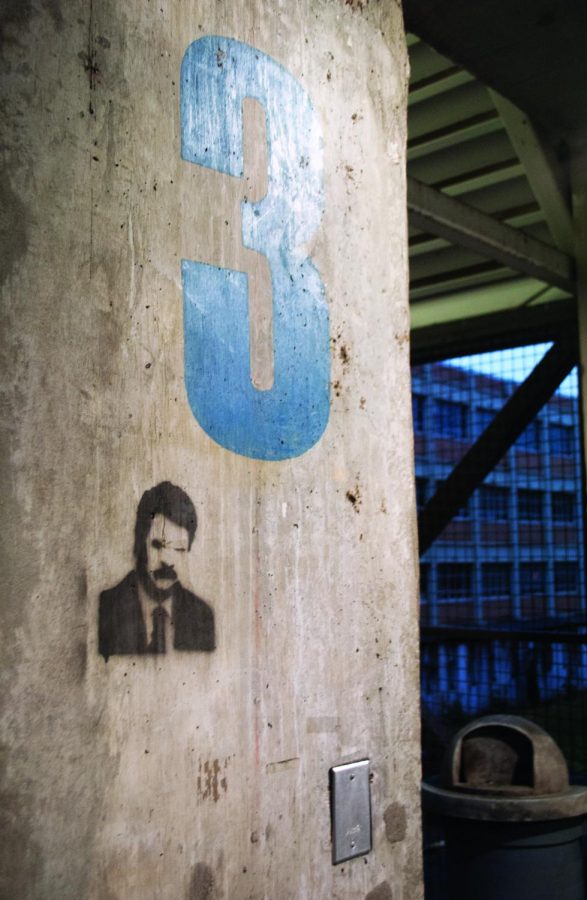Mystery graffiti artist defames walls of local structures
April 10, 2014
“Parks and Recreation” character Ron Swanson has been spotted in Florence recently. No, not at a downtown bar or restaurant, but in the form of graffiti stencils.
UNA Police Chief Bob Pastula said while students may find this to be funny, graffiti is not in compliance with Alabama law.
“There have been two instances of graffiti on campus that the maintenance guys sent me a picture of,” he said. “One of those occurred over by the University Apartments.”
Senior Dylan Tucker spotted the infamous stencil-cut image of Ron Swanson at the back door entrance of the Zodiac Theatre on N. Court Street, he said.
“I consider it art in a way,” he said. “It’s not obscene or destructive in any way.”
Graffiti tagging is an act of vandalism and the perpetrator could potentially be charged with a misdemeanor, although police have not determined what class of misdemeanor this crime would be, Pastula said.
A Class A misdemeanor fine is up to $6,000. A Class B fine is $3,000 and Class C $500, according to the Code of Alabama Law.
Sophomore Elle Ann Claytor said she saw a spray painting of Ron Swanson on a pillar at the end of the bridge that connects the science building and the parking deck.
“Since it is destroying public property, I would consider it vandalism,” she said. “But I kind of like to think of it in the way that now that it’s already done, it can’t be fixed. So, we might as well enjoy it.”
Assistant Director for Facilities Administration and Planning Mike Thompson said they are usually able to make repairs without replacing building pieces or concrete.
“Often times the spray paint can be eradicated by repainting over the surface, especially if it’s concrete,” he said. “However, if the surface is vinyl siding, it usually has to be replaced if we aren’t able to restore its original look with paint.”
The last reported incident of graffiti tagging occurred May 9, 2013 at Twin Oaks Apartments, according to the UNA crime log.
Thompson described graffiti as an eyesore, especially to such a historic campus.
“I don’t really keep up with the number of instances but we usually have vandalism like this occur three to five times a year,” he said.
Pastula confirmed there are currently no leads as to who the alleged graffiti artist is.
“Hopefully we (university police) will be able to catch them in the act soon,” he said.


